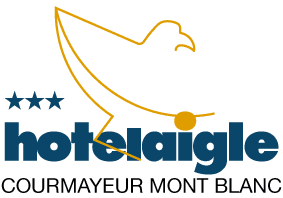A bit of geography and geology
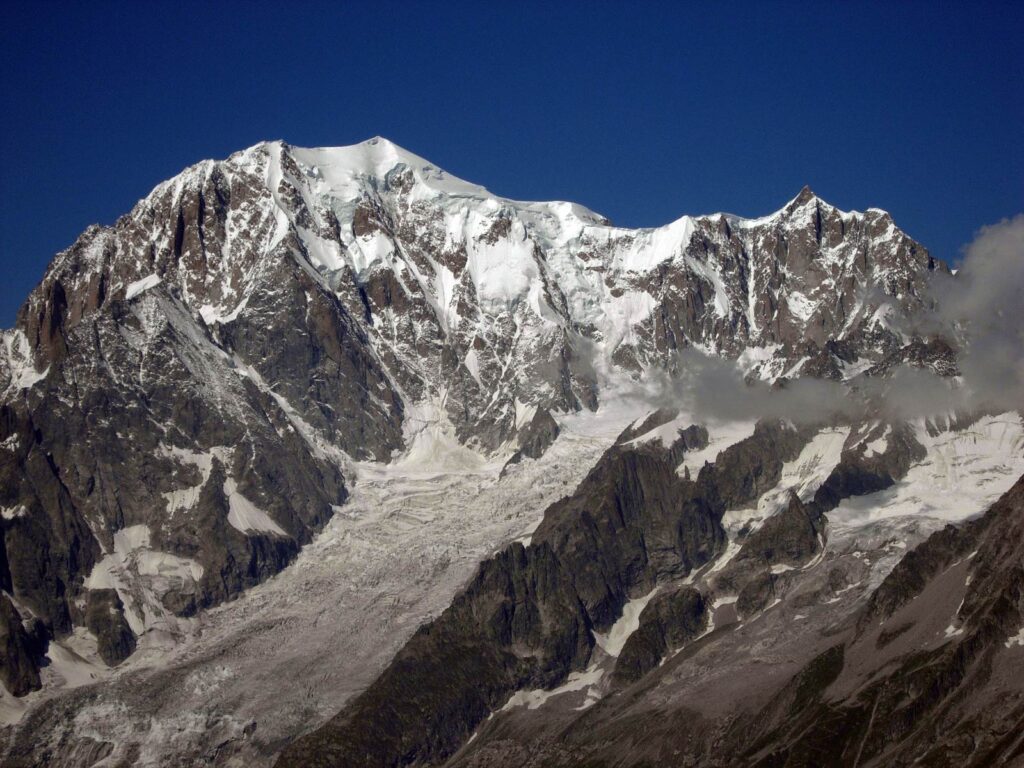
The Mont Blanc chain is about 40 km long and 13 km wide at its widest point. It has a fairly linear trend from South-West to North-East. With its compact mass, it closes the Aosta Valley at the north-west end, separating it from Haute-Savoie. At its end, the Aosta Valley branches into two sub-valleys on the right and left, which flank the massif. The first, the Val Veny, goes south-west, up to the border with France. The second, Val Ferret, goes in the opposite direction, up to the border with Switzerland.
On both sides, the huge bastion stands imposingly with a succession of snow-capped peaks, rocky spiers, ridges, inaccessible valleys and ice flows, which is unparalleled in Europe. Of the two sides, the French one to the north is sweeter, wavy and snowy. Courmayeur’s, on the contrary, appears more impervious, powerful and, in general, more impressive.
In the central part, the massif is carved out by a deep valley in French territory, crossed by a long system of glaciers that winds down the valley, just north of Chamonix. These are the Vallée Blanche and the Gigante glaciers, which join together to form the famous Mer de Glace.
From a geological point of view, the Mont Blanc massif is made up of various rocks. The predominant and most characteristic type is protogynous granite, a very hard and solid rock, which can take on shades from gray to yellow, up to reddish. Its compactness is such as to make it very resistant to atmospheric agents. This fact, together with the continuous upward thrusts of the entire mountain mass, explains the particular grandeur of the chain.
Another feature is the frequent presence of quartz crystals, especially on the Italian side.
Mont Blanc and its chain of peaks
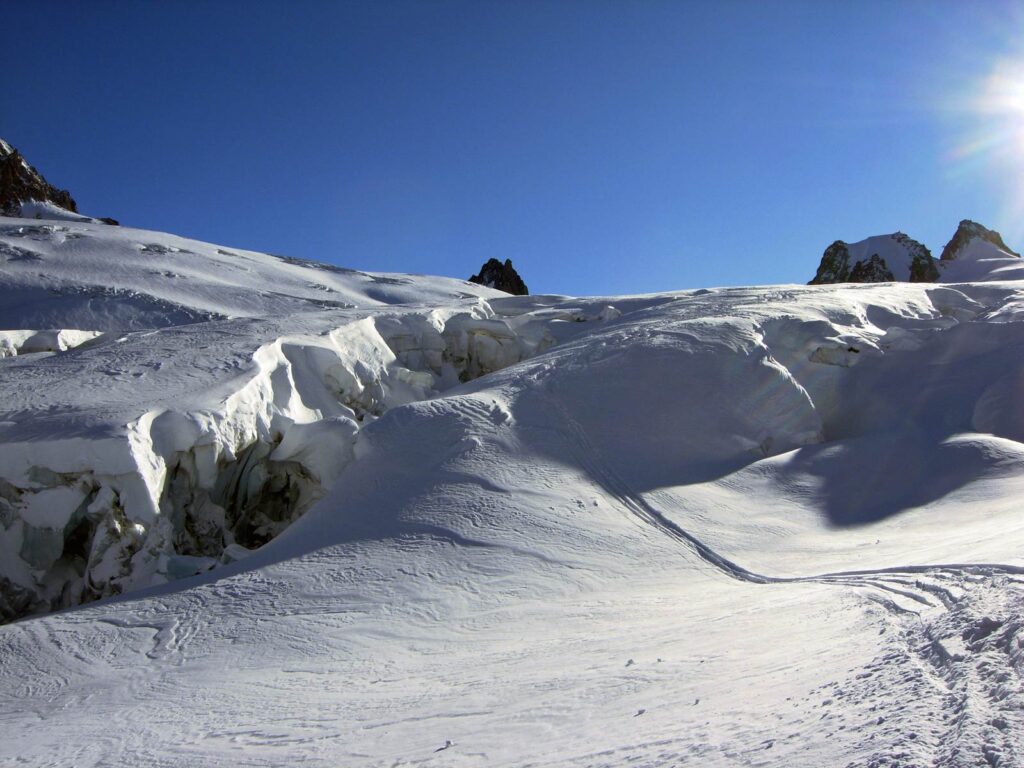
In addition to Mont Blanc itself, there are about twenty peaks that exceed 4000 m in height. Among them, the Dent du Geant, Les Grandes Jorasses, the Aiguille Blanche de Peutérey, Mont Maudit, Mont Blanc du Tacul and Aiguille Verte (the last two entirely in France) stand out for their fame and beauty. Below 4000 m but equally famous, are the Aiguille Noire de Peutérey, the Aiguille de Trélatéte, the Aiguille du Midi, the Aiguilles du Dru, the Aiguille du Triolet, the Aiguille du Chardonnet and the Mont Dolent.
Famous ridges descend from the sides of these peaks, such as the Peutérey ridge, the Innominata ridge, the Brenva ridge, the Rochefort ridge and the Aiguilles de Chamonix ridge.
Ice and snow are one of the most fascinating aspects of Mont Blanc.
In general, the glaciers are wider and longer on the colder French side. Here, in addition to the Mer de Glace, we find the Gigante glacier, the Argentière glacier, the Bossons glacier and the Trélatéte glacier. On the Italian side, the Miage glacier, the Brenva glacier, the Toula glacier and the Pré de Bar glacier should be remembered. In the north, in Switzerland, the most important are the Saleina glacier and the famous Trient glacier.
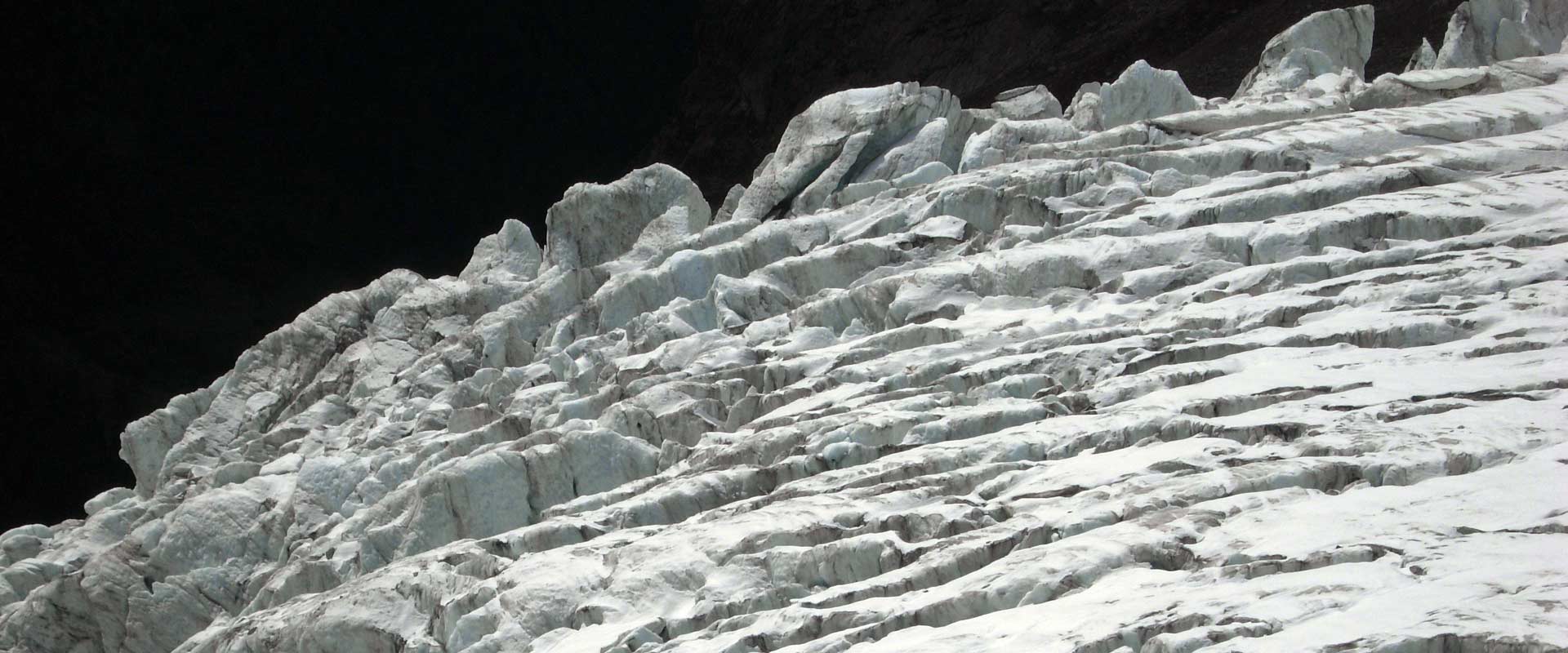
Mont Blanc and mountaineering
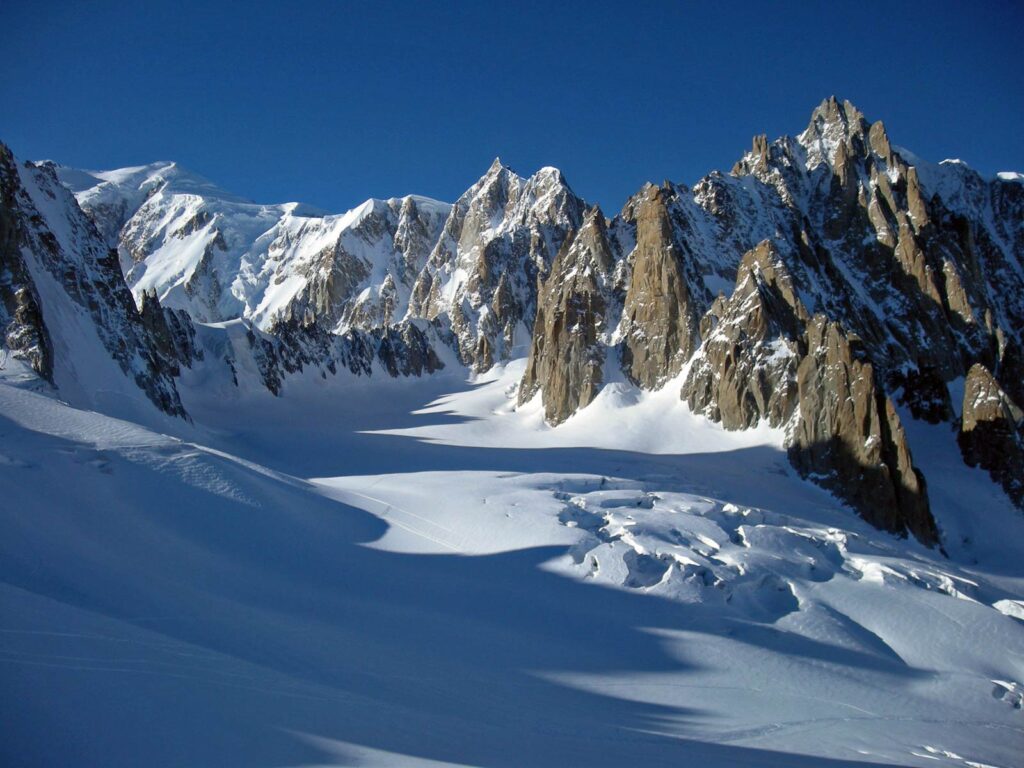
Enjoy Mont Blanc and its glaciers
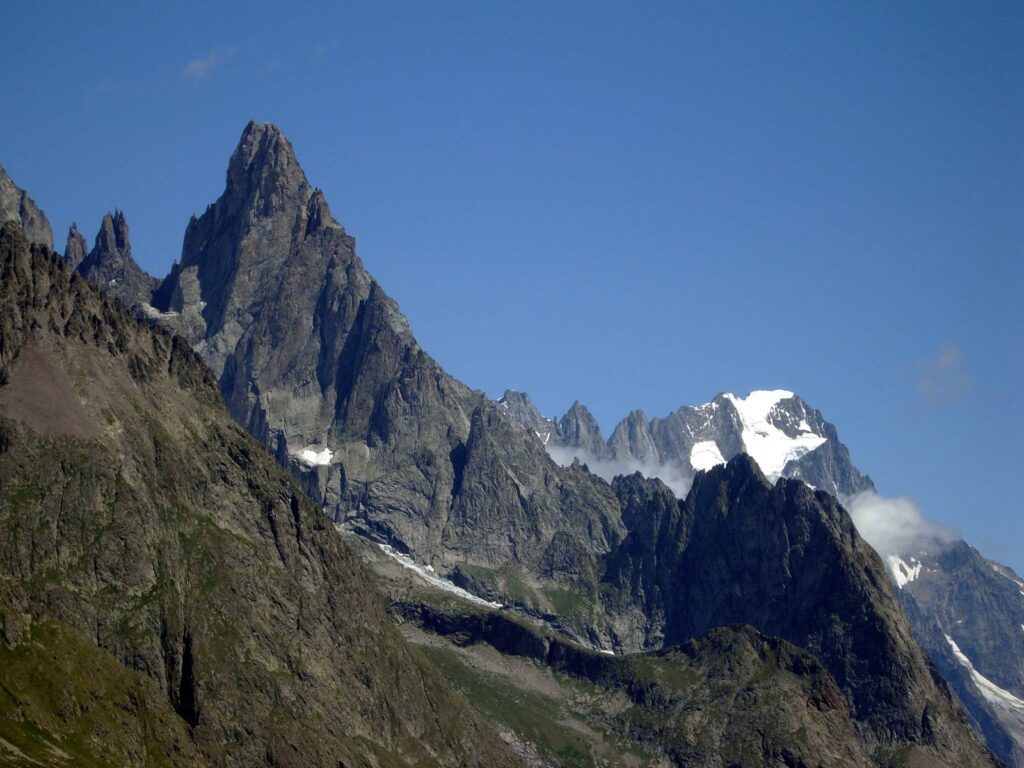
Images of Mont Blanc and its chain
Book now
By sending a booking request via our website or by contacting us directly via email or telephone, you are guaranteed to get the most advantageous deal possible.
To know the best rates for your stay, and to book your room, please either click on the button below to access our “online booking system” or fill-in and submit the following booking form:
or
fill in and submit the following booking form